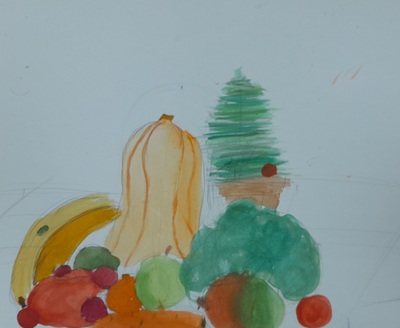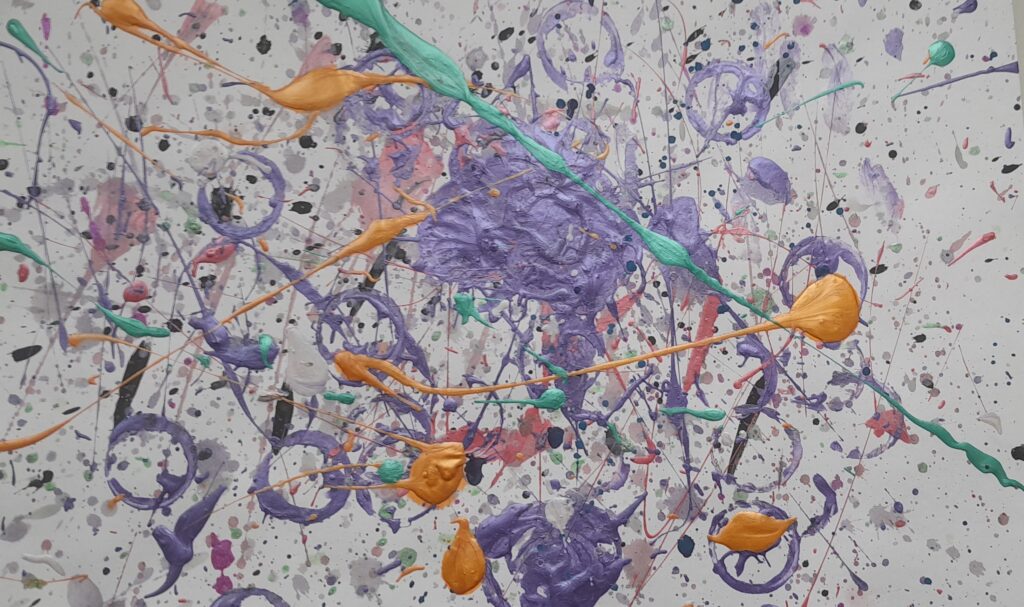Here we are again, at the next important benchmark / stage / stepping stone in our primary course – the end of the four-month period (enough time to have built up some routine) and before the start of the new calendar year with the kids coming back from the winter break having forgotten everything they have learnt. Maybe to immortalise everything before I have to rebuild the world next week or maybe to help myself remember what it was that we did a week ago, here is the post. There was nothing at the end of November (I was on holiday) and December was unusual with many kids ill, many leaving for the holiday early and with our routine slightly interrupted with the rehersals for the Christmas show, here are my kids.
Please, don’t forget to check our September adventures in the following posts here, here, here and here and our progress in October, here.
Starting the lesson and How do you feel today?
Right now, we have developed a tradition of starting with a little chit-chat before moving on to everything else. In a way, it was kind of unavoidable – the kids wanted to share or to catch up with those who were ill and returned, they had questions ‘about everything’ because our school life was quite busy and adventurous (winter photo shoot, Christmas show rehearsals, the general news). I also noticed that it is also the time that the use to clean up the tables, to organise themselves and to switch from the break into a lesson and that is especially important if our classes are the first lesson of the day. Whenever possible, I try to start this stage even before the bell rings but I gave myself the permission to stop being stressed about it and to just take it in strides. This stage does not last more than five minutes, sometimes even less.
Afterwards we move on to asking ‘How do you feel today?’. We don’t have any new emotions but I am so happy that more and more kids started to answer with ‘because’. In December the kids would also bring their toys (and there were more toys because maybe the presents started to be given out early) and they really really wanted to include them in the hello circle. That is why we started to ask ‘How many new students today?’ and this is when they introduce their toys, they count them and they reply how they feel. Usually we manage to get away with one collective question – answer per student but even so this means twice as much production. And everyone wants to share, even those who did not bring any toys on the day so we had the following items introduced as toys and getting involved in the conversation: a pencil, a Christmas decoration, a cushion and a packet of Oreos.
The roll call is a part of this stage, sometimes I lead, sometimes the kids take turns to ask the questions and only after we are done with that, we move on to our hello song. Counting from 10 to 0 stopped being necessary at this point and I don’t use it, on most days. We go back to it only occassionally, when the kids are a bit more excited and louder. This helps them to calm down.
Songs
A lot of December was hijacked by everything Christmas-related and we listend to everything that Super Simple Songs have to offer as regards the festive season. We really liked S-A-N-T-A and C-H-R-I-S-T-M-A-S which are great because of the spelling and because the later is a perfect illustration of all the Christmas traditions. I loved it and so did my kids. However, the Absolute Hit for everyone (including our non-English staff) was the Snowflake. We used it as a song, as a calming device and as a track to dance to. Even of my ‘Super Cool’ and ‘Oh, I am much more serious that the rest of you’ kids adored it and to see them twirl to it and just enjoy it was beyond precious. Not to mention that thanks to What do you want for Christmas, now we have our ‘I want to’ and ‘I don’t want to’ clocked in forever in our set of functional language structures.
Dance and freeze got, temporarily perhaps, put on hold but there were two great replacements. First of all, we were counting and working out a lot with Jack Hartman and, while I was on holiday, the cover teacher introduced my kids do Danny Go. It is a great brain-break and it helps kids work on the gross motor skills and focus and we get a few random verbs as a bonus. I have to admit I am not a huge fan, especially when the floor is lava, but the kids just loved it. Of course.
It has to be noted that we no longer have a hello song, not as such. Right now, we just choose one of our favourite song and sing it, at the beginning of the lesson or at any point throughout. The kids are given the responsibility of making that decision. We take turns and I take notes who has already been involved.
Rules and classroom language
We haven’t really changed anything regarding the rules. We still need to revise them but at this point it is only once a week that we do it. I have also noticed that the kids became much better with their own time management, a combination of a better adaptation to the school routine and being more familiar with the digital clock. I don’t need to put the end of the lesson time on the board and I do it only occassionally. It is very rarely now that I get a question from the room ‘How much time left until the end?’ and when I do, I just answer it. Or someone else from the group does.
But there are two new additions to the everyday routine. The first one is a detailed lesson plan for each of the lessons. I put it on the board, on the top, usually a set of 6 or 7 points, outlining the main stages of the lesson. Some of them are the code names that everyone is familiar with (‘read’ = phonics exercises, ‘notebook’ = we write, or ‘suprise’ = there is something good coming our way), some of them are bascially there for me, to remind me the order of activities. The kids read them all, that’s for sure and sometimes they ask questions or suggest more stages, such as another surprise or their favourite song. They have also started to ask for the permission to help me write that and that is another precious thing because it means more writing! They are also very eager to help me erase the bits once we are done with them. You can read more about this kind of a lesson plan here.
The other element, grades for each lesson, was introduced because of the serious issues of behaviour that I encountered after my holiday break. I was away for only seven working days and l left detailed instructions for the cover teacher to ensure that the gap between her lessons and mine were as small as possible, but, still, it did not work and after I came back I found my kids very much in their September mode aka ‘all over the place’. For that reason, I make a list in my notebook and I give everyone a grade at the end of every lesson, or, to be precise, two grades: one for behaviour and one for hard work and at the end of the lesson, or during the break, I announce who got what. It also works as a reminder during the lesson and so far, it has had a positive impact on the group. Their behaviour and hard work is clearly reflected in numbers and it helps them as a reference point. I found it to be more effective than my regular rewards charts because it does not take a whole board (13 kids!) and it is contained within a lesson. I am also hoping that, sooner or later, I will be able to phase it out but for now and, especially, right after the break, it is coming in very handy.
Story
Stories continue to be very much present in our classroom lives. There is a lot that we have in our books and I especially liked the series of stories on memories (Global English 3) because it gave us a chance to talk about feelings, to personalise these stories and to introduce very small bits of the past tense.
Apart from that we also did our first story writing (you can read about it here) and we read Zog (and this post here, is partly dedicated to what happened in that lesson and also to the story follow-up activities).
Socialising
In terms of socialasing, we have done the following:
- kids have been nominating themselves ‘Who’s next?’ although, because of the behaviour issues I mentioned before, I had to mix it with a more T-centred approach.
- we have been doing a lot of alternative seating arrangements such as: sitting on the carpet (for the phonics games and pelmanism), sitting around the carpet on the chairs (for all the city + prepositions games), sitting in two rows facing each other for pairwork, working in pairs with changing partners
- kids have been taking turns to give out and to collect materials and to make decisions about the lesson (songs and games)
- working together as a class to win snoflakes in the whole school advent calendar winter activities
- we have done a few projects in which the kids were working individually but sharing the resources such as the cards (on the board) or the stickers, learning how to take turns, how to share, how to wait. I was really proud of the children because it all went well.
- we have had a lot of activities in which one student was leading the game, especially our riddles
- as a whole class we created Christmas gardlands to decorate our classrooms and it was a perfect bonding project
Creativity
Our creative projects in December were all Christmas-related
- used the theme in our Serious Maths Classes, with Christmas Maths Stories, Christmas Puzzles and colouring pictures, Help the Reindeer
- we created our posters about our favourite characters, the day when we were proud. We also created our Reindeer Hats in the final lessons of the year.
- we played a lot with songs, creating our own versions and we had a blast for a few lessons playing pelmanism and creating wrong sentences (‘Paul washes the dragon’ instead of ‘Paul washes the car’) which finished with a mini-project of our TV programme ‘Crazy Sentences’ in which we made a video of kids reading their creations. That was fun and I am planning to do it again after the break.
- and the garlands mentioned above
Teacher
Well, these were busy two months and sometimes very tiring because of the behaviour issues but we are working on everything, we are improving and we are learning.
It is good to know that I am sowing a lot but I can reap a lot, too. We have crossed one super important bridge in Maths with all the regrouping activities, as regards addition and subtraction. It was not the smoothest of rides and I think even my strongest Maths kids are not entirely excited about subtraction but we are making progress and I have to admit, I love it when I hear ‘I get it now!’ and they just move on with it.
Our English classes are more and more English now and I can see how they are making progress and become more and more communicative. We decided to test everyone regarding their English level, using the Cambridge exams framework and we are half-way through with it and it will be great to track the kids’ progress over the year. This, in itself, has been a very interesting exercise for me and I will definitely write about it after I have reflected on everything properly.
We prepared a great dance for the Christmas show and this was an interesting experience for me, too.
And, last but not least, we have completed our first big notebook as in: we filled it up with handouts, notes and drawings up to the last page and we could finally take it home. I loved it watching kids look through the pages, reminisicing on everything we had done already and how much we had learnt. Afterwards, we closed them, said ‘Thank you, Notebook’ for helping us learn and we took them home. Naturally, we have already started the new ones, too.
Another thing that did happen over those last two months, also in the category of ‘last but not least’, after two months of studying only with notebooks and handouts, at the begining of November, we introduced the coursebook for English, Maths, Science and History and now they are a part of our everyday school life. We are much more serious students now. Hooray.
Kids after the break aka what happens next
January will be messy. Some students have missed a week of school, many have missed two weeks, some even more. I bet you everyone has forgotten what the classroom is about. Preparing for the first day and the first week will be quite something, as regards the subject and as regards the classroom management. Good luck to me and see you in a while. I will be back with an update.
Happy teaching!










































